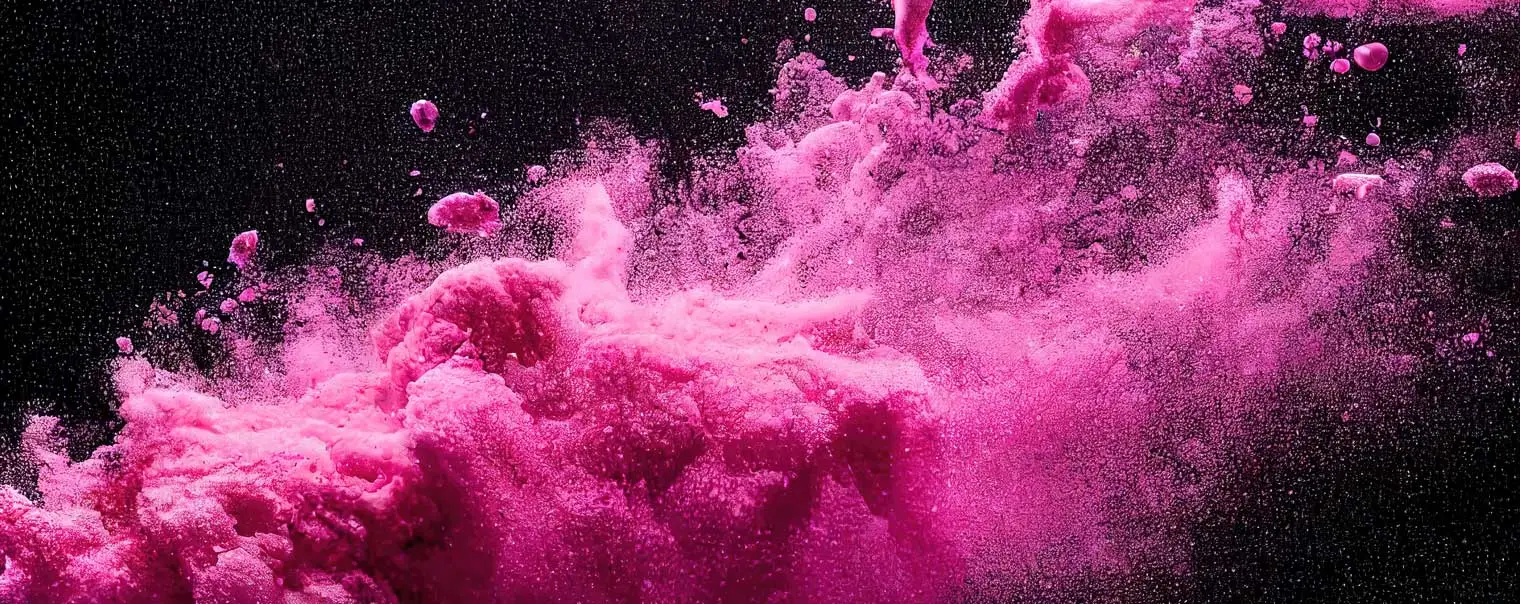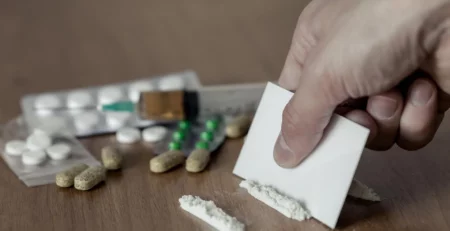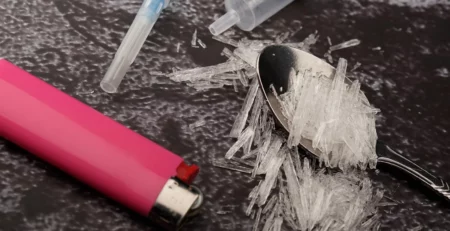What is the Tuci Drug? Realities and Risks
Get Resources and Support to Quit Party Drugs at Icarus Nevada
Every day new types of drugs hit the black market, aiming at a different demographic of consumers looking for their next high. There is currently, and has been for a while, a large market for synthetic or designer drugs – especially among circles at clubs and raves.
One drug, known as Tuci– short for Tucibi, which is representative of 2-CB – part of the chemical 2C-B or 4-Bromo-2,5-dimethoxyphenethylamine – also known as Pink Cocaine – has nothing to do with cocaine at all. It’s not part of the coca family and there’s nothing natural about it. But what is the Tuci drug? In this article, you’ll learn about the pitfalls of Tuci, aka pink cocaine – a psychoactive substance that’s taken Nevada and the party scene by storm.
Keep reading to get all the details, and reach out to Icarus in Nevada for help and support in seeking a new way of living if the party life has begun to lose its appeal!
What is the Tuci Drug?

Nevada, home to the Burning Man Festival, is no stranger to drug abuse behavior and psychoactive substances – synthetic drugs that send users on dangerous trips as part of a never-ending drug experimentation quest. These people, who claim to be searching for a higher consciousness, are simply repackaging a drug addiction as part of a spiritual journey.
Unfortunately, many may not even be aware they have a problem. What we do know, is that most of them aren’t aware of the dangers of the latest craze – pink cocaine.
Pink cocaine was initially created by chemist Alexander Shulgin at Harvard University. Initially, 2-CB was used as a cure for erectile dysfunction. However, in 1995, the DEA classified the drug now called pink cocaine as a Schedule 1 Controlled Substance.
The 2-CB that we’re currently seeing on the market, however, is often neither cocaine nor 2-CB at all.
Get Detox and Treatment Options at Icarus Nevada – Call Now!
The Designer Drug 2-CB

This controlled substance is different from other drugs you might have experienced. The current mixture of 2C B is a combination of MDMA (Ecstasy), ketamine, meth, and even opioids or psychoactive drugs like mescaline and LSD.
This dangerous combo of different substances aims to take the user’s breath away with a hypnotizing euphoric experience. The dangerous part of 2C B is the fact that it’s causing paranoid delusions, psychosis, and other mental health breakdowns for those brave enough to use it.
The Not-So-Triumphant Return of 2C B as Pink Cocaine
The last ten years in Latin America have included a boom in 2C B among clubgoers. This once-nearly-extinct drug has made a huge comeback. Not since the 1970s has Tuci been used at the levels we’re seeing today. However, because of the lack of actual 2C B, users are playing Russian Roulette – not knowing what they’re going to encounter in their next batch.
Distributors of the drug can concoct a batch of pink powder right in their living room at home – no special equipment or machinery is required. No lab skills, presses, or anything that would normally go into distribution. Just the ability to mix and make whatever deadly cocktail is available at the time of packaging.
What Separates Pink Cocaine vs Real Cocaine?
2C B and traditional cocaine both leave users mentally unstable and chemically dependent. However, that’s where the similarities stop. Cocaine is derived from a plant, making it an organic compound. Actual cocaine is made into a paste from the crushed leaves of the plant. Real Tuci is synthetic phenylethylamine – created in a lab as an analog, or copy, of another substance.
Once consumed, 2C B produces psychoactive and hallucinogenic effects by opening up the body’s release of serotonin. Serotonin is associated with the feel-good parts and the reward processes of the body. It produces the same feeling as when you accomplish a substantial task or have a big crowd cheer for you after you hit a home run. However – this is what makes it so addictive.
The Risk of Addiction and New Psychoactive Substances

When users begin engaging in regular consumption of this drug – usually in pill form – it follows the path of most synthetic drugs, leading the user straight into addiction. The problem is this addiction isn’t just mental – it’s also physical. Most users feel compelled to continuously use the drug to try and regain the high they initially felt during the early stages.
After prolonged use, the tolerance sets in, and larger amounts become a regular activity, regardless of the risk of addiction the drug carries. With a drug this intense, there are multiple side effects users must be aware of.
The Powerful Impact of Pink Cocaine
Tuci has extremely powerful and unpredictable results after ingested. Depending on exactly how much is used, the potential side effects include the following:
- Nausea
- Increased agitation or paranoia
- Anxiety
- Increased heart rate
- Heightened senses
- Severe auditory and visual hallucinations
After extended exposure and the ingestion of large amounts, users run the risk of experiencing delirium, hypothermia from overheating, seizure, respiratory depression, and heart attack.
Get Support and Seek Treatment at Icarus – Call Now!
Who Uses Tusi the Most?
Pink coke has increased in popularity in several facets of society. The first, and most obvious, is the club drug scene – as we stated initially. However, the second group consists of those struggling with drug addiction already. Unfortunately, the large demographic of those already struggling with substance abuse issues is rapidly growing.
Already strained by the opioid crisis, users are flocking to almost any drug that’s available to them. Mixing the drugs is making a deadly game even more dangerous.
The group that’s least affected by the dangers is the demographic of recreational club drug users. This includes a much younger age group who are chasing new experiences and increased consciousness. However, because it’s difficult to gauge the direction the drug will go, users run the risk of suffering from a fatal experience after only one use.
The Spread of Drug Abuse Behavior During Lockdown
Many people point to the onset of the COVID-19 epidemic as the culprit for the exploding popularity of Tusi. This doesn’t seem far from the truth, as we already know that Covid pushed the fentanyl epidemic to new heights. With the majority of the population depressed and contained within the walls of their home, unable to enjoy human contact regularly – people begin looking for ways to fill that void.
Combine this with the fact that the drug is marketed as pink cocaine, and new, inexperienced users think they’re on to the next big thing in the club scene. However, because Tusi grew rapidly in popularity, distributors began creating their drug combinations and slapping a Tusi sticker on for marketing.
A Party Drug Marketed Towards Young Adults

One of the most unfortunate dynamics of pink coke is the fact that there’s a huge spike in the amount of drug use by young adults and even teenagers. Combined with opioid addiction and other street drugs, it’s no wonder Tusi has been claiming so many lives. But here’s the kicker. Those who distribute the crude mixtures claiming to be 2C B are now lacing the product with powdered strawberry milk or Strawberry Qwik.
This is marketed, directly at the younger demographic and kids under the age of 18 – the most vulnerable and exposed group of individuals in society. And these tactics from the past year are nothing new. It’s eerily similar to the rainbow-colored oxycodone pills that are fashioned to look like pieces of candy, but in reality, are loaded with pure fentanyl – and causing a surge in unsuspecting overdose deaths.
The bright spot in all this is the fact that there are organizations like Icarus Behavioral Health Nevada who, coupled with the local community, are making a valiant effort to eliminate this type of behavior and reclaim the lives of the young people impacted by this risky synthetic drug.
Up to 100% of Treatment Costs Covered by Insurance – Call Now!
Reach Out for a Pillar of Support and Get Lasting Recovery
Nevada has been through the gauntlet when it comes to addiction issues – heroin, methamphetamine, and now substances like Tusi, have ravaged local communities. By working together with other boots-on-the-ground efforts, we believe that we can help stomp out the influx of drugs like Tusi – and even the fentanyl epidemic.
The path out of the party drug life and into meaningful recovery is found at Icarus in Nevada.
If you or someone you love is struggling with addiction, contact us today. There’s no reason to wait or put your recovery on hold – contact a member of our admissions team now so we can put you on the right track for healing!











